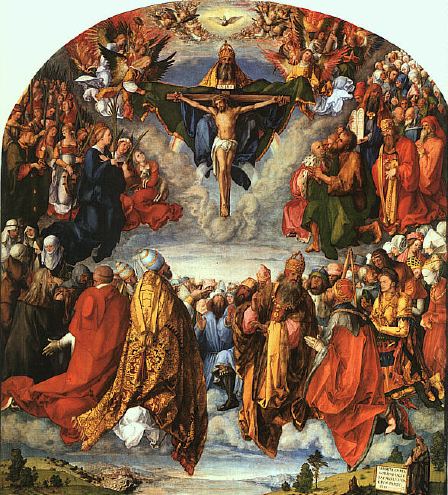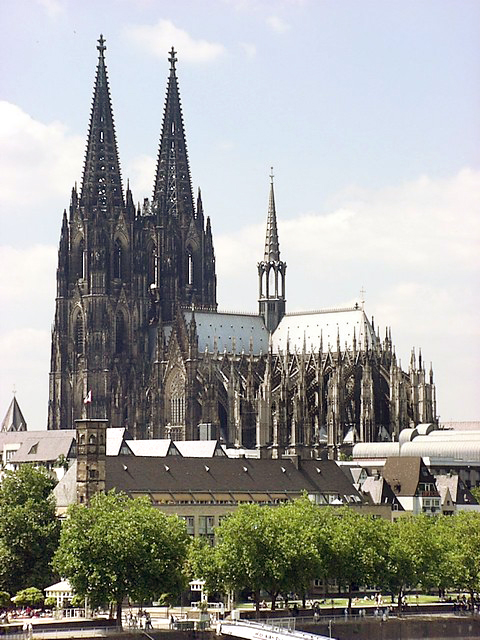
Continued from part I
Let’s jump right in. I’m going to frame each of these four issues in the form of a question that may stand between us and a sense of Christian vocation in our work.
Here’s the first question that may be nagging us as we seek a sense of vocation in our work:
- Does time dedicated to working in the secular world endanger our souls? Is there an inherent tension or contradiction between the “worldliness” of work and the “spirituality” of faith?
A century or two before the opening of the Middle Ages, the theologian whose influence would become definitive for the next thousand years, Augustine of Hippo, distinguished two spheres of human endeavor: the “active life”—our work in the world—and the “contemplative life”—our private worship and prayer. The active life could be good, but the contemplative life, such as that enjoyed by monks and nuns, was much better—and indeed safer for our souls.
Augustine’s bifurcated view of work has persisted in some circles right up to this day – but it was quickly challenged by the man some consider the spiritual father of the medieval church, as Augustine was its theological father.
Born into a wealthy family and educated in grammar, rhetoric, law, and letters, young Gregory—who would become Pope Gregory the Great (540-604)—rose by age 33 to the exalted position of Roman prefect, in charge of the city’s police force, food supply, and finances.
Gregory found in Augustine’s distinction between the active and contemplative life a frightening challenge to his spiritual life. He worried that all the ordinary, daily, toilsome work of the prefecture might be endangering his very soul. Where in all the busyness could he find God?
Agonized, Gregory left his public work, along with his wealth and power, and took on the monastic vows of obedience, poverty, and celibacy—entering the monastic life of daily disciplines, prayer, and Bible reading. He expected to live out his years safely ensconced in the contemplative routines of the cloister.
But his holy seclusion was not to last. Just three years later, in 578, Pope Benedict I called Gregory out of his monastery to become one of the seven deacons of Rome, an office carrying heavy administrative duties. And when Pope Pelagius II died of plague twelve years later, Gregory was unanimously chosen to succeed him as pope.
If the life of a Roman deacon was busy, that of a pope was ten times more. In an empire in upheaval, facing cycles of drought, famine, and plague—with the barbarians at the very gates of Rome and the aristocratic leaders fleeing for their lives—the church found itself stepping in to roles it would retain for the next thousand years: responsibilities not just for the spiritual, but also the material and social welfare of ordinary people.
As never before, the question of the relationship between the contemplative and the active life loomed for Gregory. He came to see his own life through the biblical story of Jacob’s love for Rachel, thwarted by his marriage to Leah. For Gregory, “Rachel” was the contemplative life: divinely beautiful but barren, not producing anything in the world of affairs. As Gregory wrote to the Empress Theoctista upon his elevation to the papacy, he had been “coupled in the night . . . to the fertile Leah”—that is, the active life of service to others—while every yearning of his heart was for the beautiful Rachel.
Agonized, he entered a long study of Scripture and the fathers. And slowly, surprisingly, he discovered a remarkable synthesis between the active and contemplative lives. He concluded, as he would later put it, that “activity precedes contemplation, but contemplation must be expressed in service to one’s neighbor.” In order to become truly spiritual, one must move not only, sometimes, away from the distractions of the flesh to reach the spirit—as did the monastics—but also, other times, back from the heights of the spiritual life to the practical concerns of material and social life. The contemplative life, he concluded, equips us for the active life, and the active life grounds us in acts of love to our neighbors.
Soon the sixth-century monk-pope came to see those who lived the active, working life as in fact better equipped to experience the contemplative life than those who absorbed all their hours in study and meditation. A married cleaning woman, he wrote, might well attain to greater spiritual heights than a cloistered nun.
Thus a thousand years before Martin Luther, Gregory broke down the “sacred-secular divide”—for himself, and then for many who followed. His more holistic understanding of work spread through the Western church as leaders put Gregory’s writings into the hands of every newly consecrated bishop for nearly a thousand years!
Today, Gregory’s insight might seem cliché: of course we must serve others to grow in grace. Of course we must recharge our spiritual batteries to serve others effectively. But Gregory went beyond these simple ideas to a kind of sacramental unity. He insisted that when we engage in our worldly vocations, everything in our experience can mediate God’s presence and grace and voice to us: the material goods that sustain us; our sometimes stressful relationships with our coworkers; even the dull, drumming repetition of trivial toil.
One very important way the active life of work helps us to discern the voice of God, Gregory taught, is through the experiences of suffering it exposes us to. Working in a challenging time—beset by war, pestilence, famine, and his own chronic ill-health—Gregory turned for wisdom to the Book of Job. In a lengthy commentary on that book, he worked out a theology of suffering not as an absolute evil, but rather as a special case of God’s personal communication to his beloved people. [What a word in season Gregory has for us now, doesn’t he?]
The sufferings of the active life, Gregory taught, come not from God’s good will but from the devil. But –and here was the good news—God keeps the devil on a short leash. Again and again, he turns to our good what our Enemy intends for our destruction; and as the active life of service confronts us with the sinfulness both of others and of ourselves, we are repeatedly forced out beyond our own resources, into a deeper dependence on God. So while work in the world is no rose-garden of fulfilment, it does bring us something more precious. Through it, Gregory taught, the attentive layperson may develop the holy discernment, spiritual integrity, and unruffled tranquility that was once thought to belong only to the monks and nuns in their cloisters.
So our first question—does time dedicated to working in the secular world endanger our souls?—is answered by Gregory like this: the active life of service may serve as handmaiden to the contemplative life – and the contemplative to the active, in return.
. . . continued in part III

 Medieval Wisdom for Modern Christians
Medieval Wisdom for Modern Christians







Pingback: Is work irredeemably secular? – part III | Grateful to the dead
Pingback: Is work irredeemably secular? – part I | Grateful to the dead